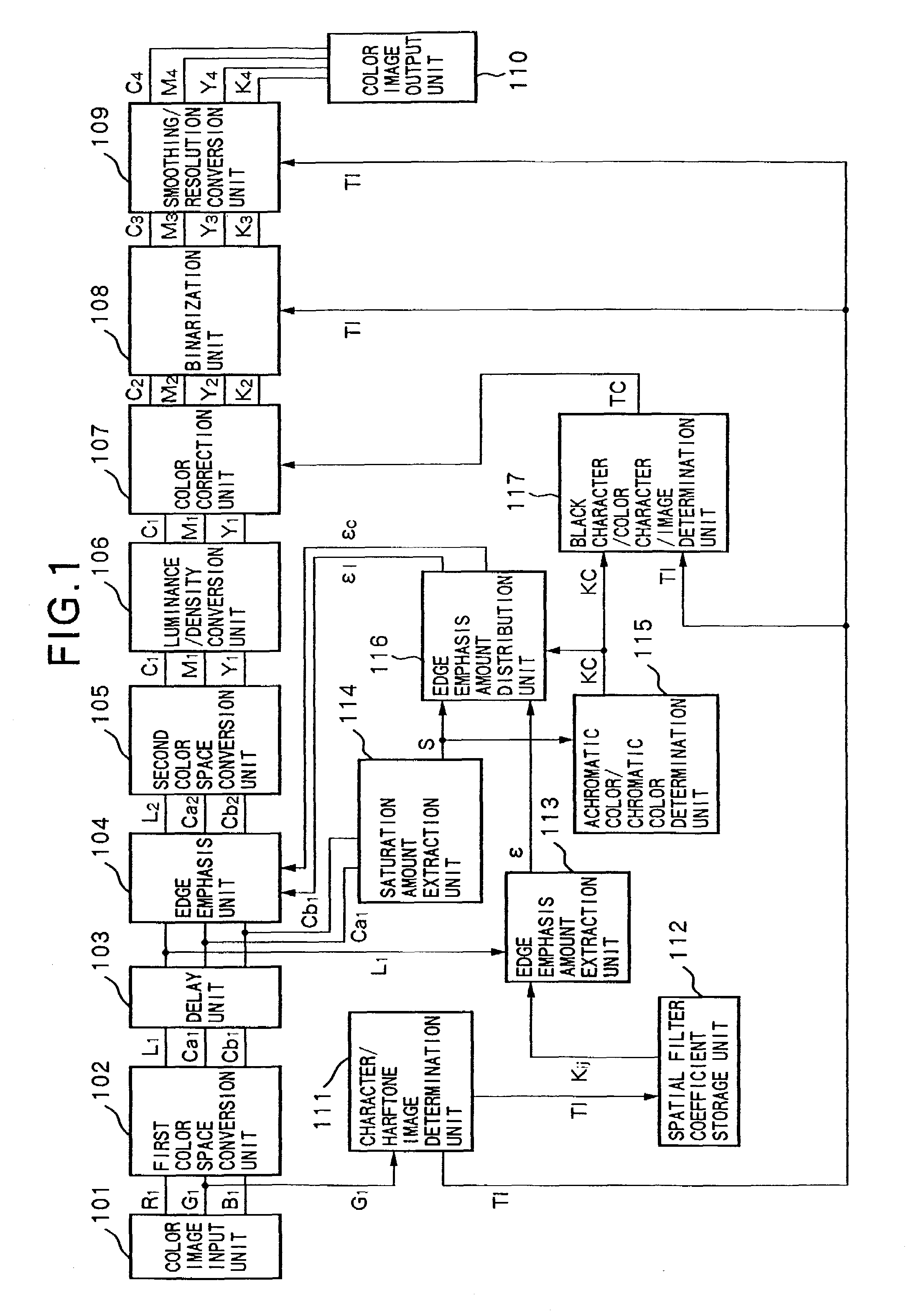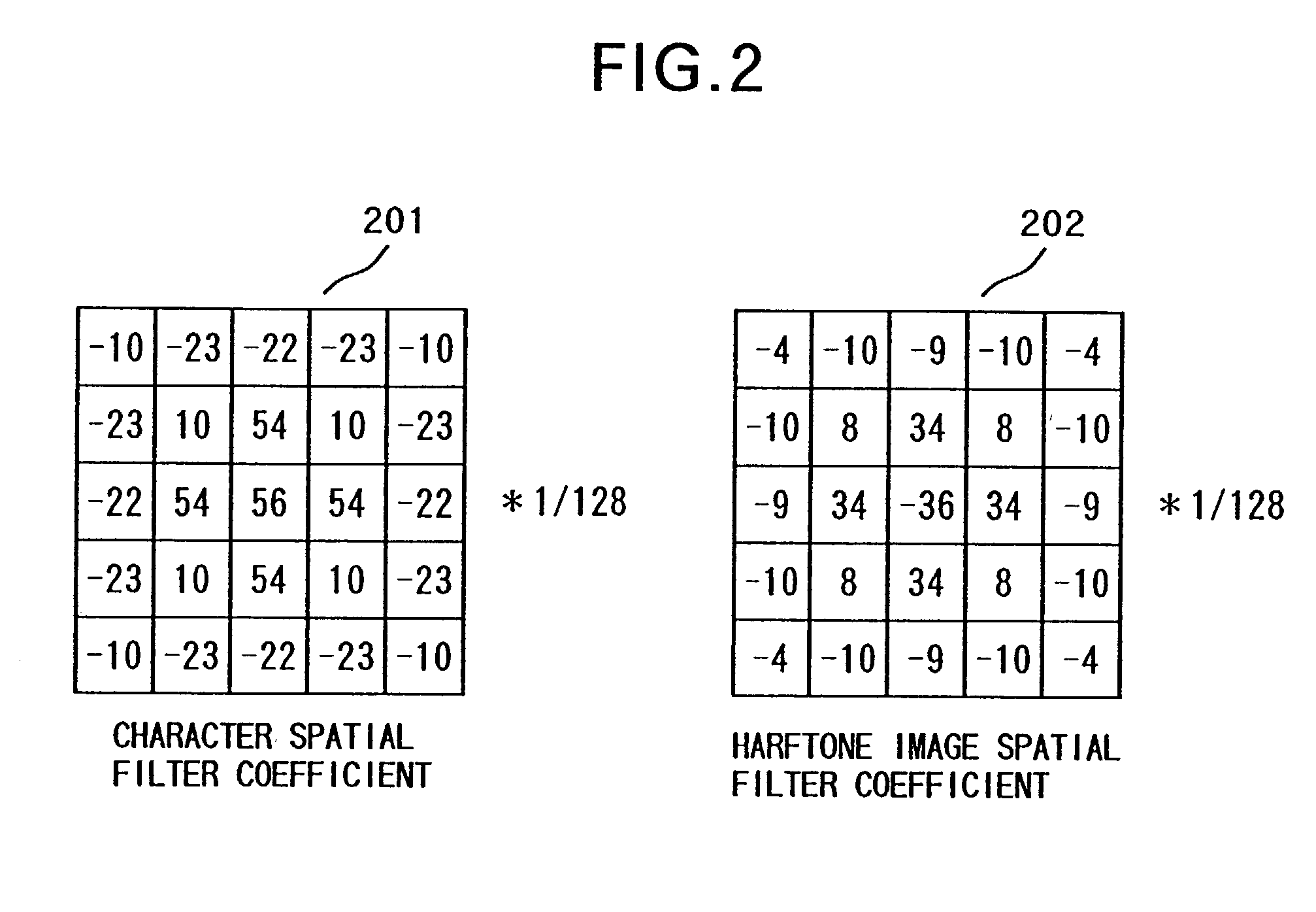Image processing apparatus and method
a technology of image processing and apparatus, applied in the field of image processing apparatus and method, can solve the problems of high cost, inability to correct, and inability to accurately detect the color, so as to reduce the cost associated with correction and suppress the deterioration of image quality
- Summary
- Abstract
- Description
- Claims
- Application Information
AI Technical Summary
Benefits of technology
Problems solved by technology
Method used
Image
Examples
second embodiment
(Second Embodiment)
[0137]The second embodiment of the present invention will be described in detail hereinafter with reference to FIG. 9. The same reference numerals in FIG. 9 denote the same parts as those in the first embodiment of the present invention shown in FIG. 1, and a detailed description thereof will be omitted. In the second embodiment, the difference from the first embodiment shown in FIG. 1 is that an original image color determination unit 901 is added to the arrangement of FIG. 1.
[0138]The second embodiment of the present invention with the arrangement shown in FIG. 9 assumes a case wherein color image processing is executed in a color copying machine, and performs original color determination in advance to check if the original to be copied is a color original or a monochrome original.
[0139]When the original image color determination unit 901 determines in advance if the original to be copied is a color original or a monochrome original, the entire surface of the or...
third embodiment
(Third Embodiment)
[0149]The third embodiment of the present invention will be described in detail hereinafter with reference to FIG. 11. The same reference numerals in FIG. 11 denote the same parts as in the first embodiment shown in FIG. 1, and a detailed description thereof will be omitted. In the third embodiment, the difference from the first embodiment shown in FIG. 1 is that a color mode designation unit 1101 is added to the arrangement shown in FIG. 1. The color mode designation unit 1101 has a key input unit that allows operation inputs by an operator. The operator can designate and input, using the key input unit, whether the image to be output from a color image output unit 110 is output in a full-color mode or a black-and-white (monochrome) mode.
[0150]In the following description, designation as to whether the copied image is to be output in the full-color mode or in the monochrome mode (including a black-and-white image) upon execution of color image processing in a colo...
fourth embodiment
(Fourth Embodiment)
[0164]In general, in a color image processing apparatus, especially, in a color copying machine, when an image corresponding to a monochrome original is to be formed and output, the image is copied using four colors, i.e., C (cyan), M (magenta), Y (yellow), and K (black). However, in the case of a laser beam printer, in consideration of the service life of a drum and consumption of toner, the image corresponding to the monochrome original is preferably copied using black color alone. The same applies to a copying machine that incorporates an ink-jet printer.
[0165]For this reason, the copying machine is required to have a processing unit for determining if the input original is a color or monochrome original. Conventionally, such processing is realized by simple evaluation, i.e., by summing up the color pixels of an input original and performing simple statistical processing of the sum or comparing the sum with a slice level.
[0166]However, when color pixel determin...
PUM
 Login to View More
Login to View More Abstract
Description
Claims
Application Information
 Login to View More
Login to View More - R&D
- Intellectual Property
- Life Sciences
- Materials
- Tech Scout
- Unparalleled Data Quality
- Higher Quality Content
- 60% Fewer Hallucinations
Browse by: Latest US Patents, China's latest patents, Technical Efficacy Thesaurus, Application Domain, Technology Topic, Popular Technical Reports.
© 2025 PatSnap. All rights reserved.Legal|Privacy policy|Modern Slavery Act Transparency Statement|Sitemap|About US| Contact US: help@patsnap.com



